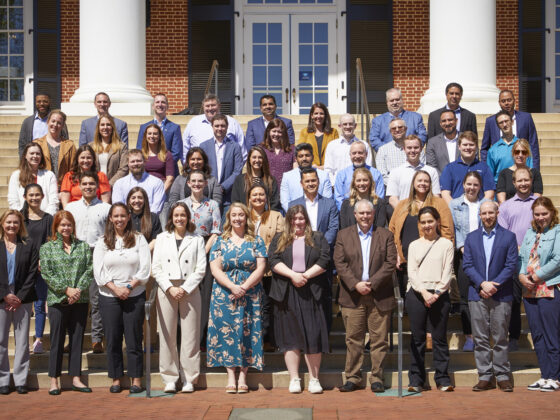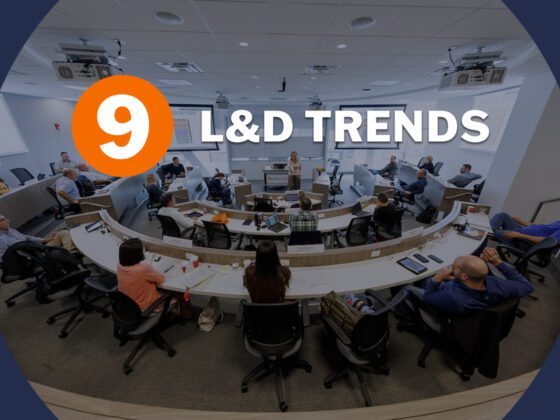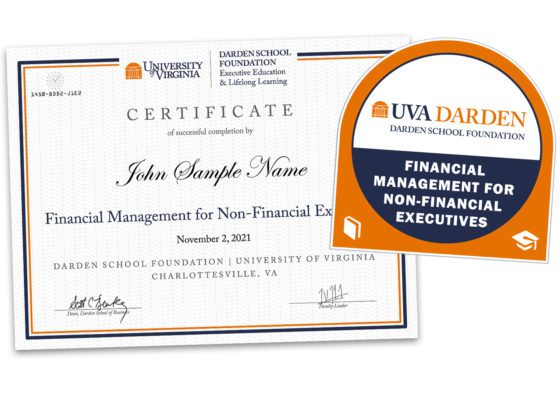In the fast-paced world of professional development, staying ahead of the curve is crucial. Blended learning, a mix of online and in-person educational approaches, has emerged as a dynamic solution to enhance learning experiences and outcomes. During a recent webinar hosted by Brandon Hall Group and NovoEd, Wesley Best, Director of Educational Technologies and Digital Programs for Darden Executive Education & Lifelong Learning, joined other experts from the University of British Columbia Sauder School of Business and NovoEd to explore key strategies for developing successful blended learning solutions. Whether you’re a corporate trainer, an HR leader, or an educator, these tips will help you create engaging and effective programs that drive growth and innovation.
1. Understand The Culture
To design effective blended learning experiences, it’s essential to have a deep understanding of the culture, learners, and organizations involved. This understanding allows you to set both business and learning goals and objectives effectively. By comprehensively grasping the organizational context and the needs of the learners, you can tailor the blended learning modalities to fit the specific environment to meet learners needs. For instance, if your organization values collaboration and teamwork, incorporating group activities and discussions into the learning process can foster a sense of community and engagement among participants.
Practical Tip:
Conduct assessments, surveys, and interviews with stakeholders and learners to gain insights into their needs, gaps, and challenges. Use this information to align both your organizational and learner objectives.
2. Bring Learners Together
Creating a cohesive learning culture is crucial in blended environments. Initiating pre-sessions, kickoffs, and even post-session graduations can establish a sense of unity and excitement among learners from the very start and bring learners together. These activities not only boost motivation, but also lay the foundation for a collaborative learning community and establish shared interests among learners. For example, a kickoff session could involve interactive icebreakers or team-building exercises that encourage participants to connect and share their expectations for the program.
Examples:
One company mentioned integrated virtual coffee chats and live Q&A sessions into their onboarding process to foster connections and build relationships among new employees. This approach significantly improved engagement and retention rates.
Another company invited their senior leadership team members to attend both a pre-session orientation and a post-session graduation. This approach improved engagement, retention rates, and established the importance of a learning experience not only for learners, but for senior leadership team members as well.
3. Incorporate Managers and Organizations
The involvement of supervisors and managers in the learning process is vital for enhancing accountability and engagement of learners. A learner’s experience impacts everyone in the organization, making it essential for managers to actively participate and support their teams. By involving managers, organizations can ensure that the learning aligns with their strategic objectives and encourages a culture of continuous improvement.
Data Point:
According to a study by Brandon Hall Group, organizations that involve managers in the learning process reported a 34% increase in employee engagement and productivity.
4. Incentivization
For learning to be meaningful and relevant, it must be incentivized. Demonstrating a clear return on investment (ROI) from both a business and learner perspective is crucial. Capstone assignments, which serve as culminating projects, provide real incentives for learners and organizations alike and answers the “What’s in it for me?” question for learners. These personalized assignments connect learners to both professional and organizational goals, and allow learners to apply what they’ve learned to real-world scenarios, reinforcing their understanding and showcasing the value of the learning experience.
Practical Tips:
Incorporate checkpoints and milestones for learners as they complete capstone assignments with opportunities for feedback and recognition on their projects, to motivate learners and recognize their progress and achievements. Offer certifications or badges upon completion to enhance resumes and career prospects.
5. Leverage Innovative Engagement Tools
Blended learning presents unique opportunities to leverage cutting-edge techniques for fostering learner engagement, motivation, and accountability throughout the learning journey. By incorporating interactive multimedia elements, gamification, and collaboration tools as part of personalized learning paths, you can create a dynamic and stimulating learning environment. For instance, using virtual reality (VR) simulations in learning journeys can provide immersive experiences that bridge the gap between theory and practice.
Examples:
One organization implemented a gamified learning platform that rewarded employees with points and badges for completing modules and achieving milestones. This approach increased participation rates by over 50%.
Also, Darden piloted a virtual reality platform and experience for The Executive Program (TEP) to provide experiential learning at a distance in a classroom and social environment.
Blended learning solutions offer a powerful means to revolutionize professional development and drive meaningful results. By understanding your organization’s culture, fostering collaboration, involving managers, incentivizing learning, and leveraging innovative engagement tools and technologies, you can create programs that inspire growth, innovation and success.
Ready to transform your organization through immersive, engaging learning? Explore Darden’s customized solutions to maximize the impact of your professional development initiatives and align them with your organization’s goals.
This article pulls insights from the webinar “Blended Learning Reimagined: Strategies for Cohesive & Engaging Programs” hosted by Brandon Hall Group. You can view the entire conversation online here.




